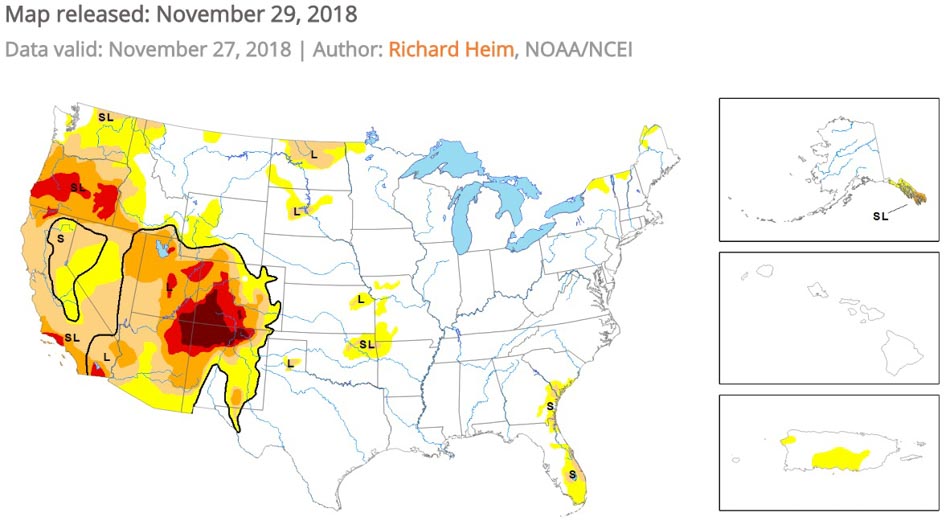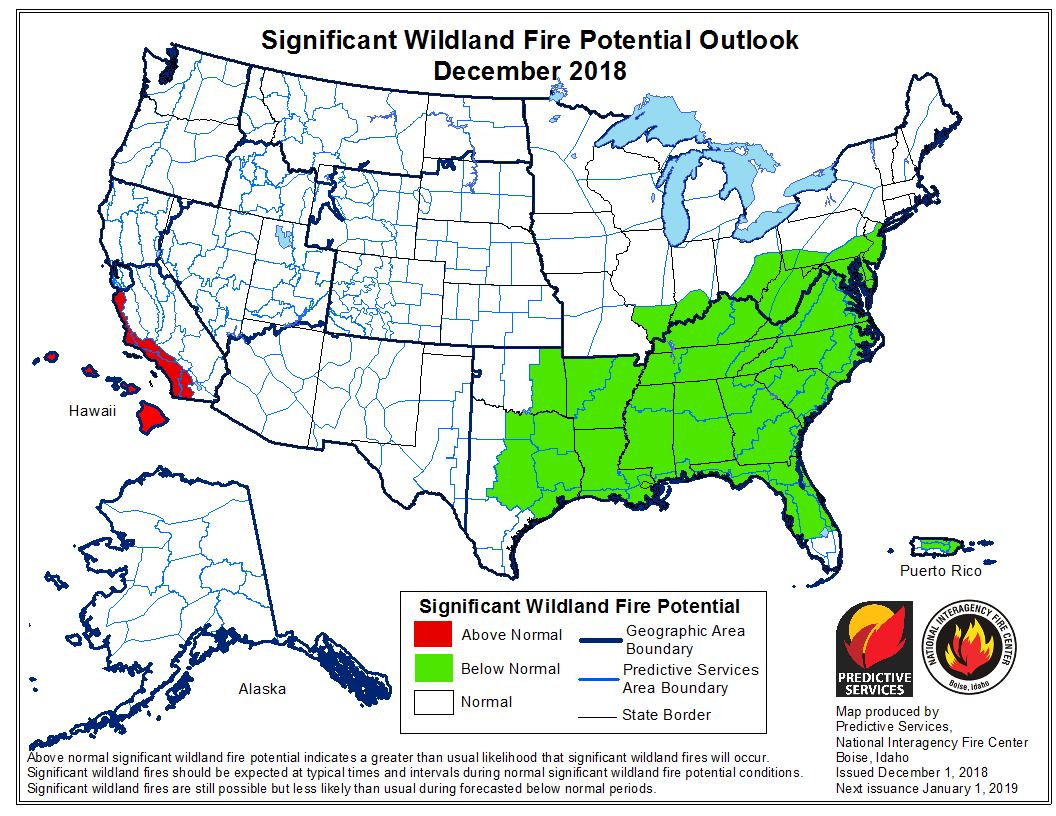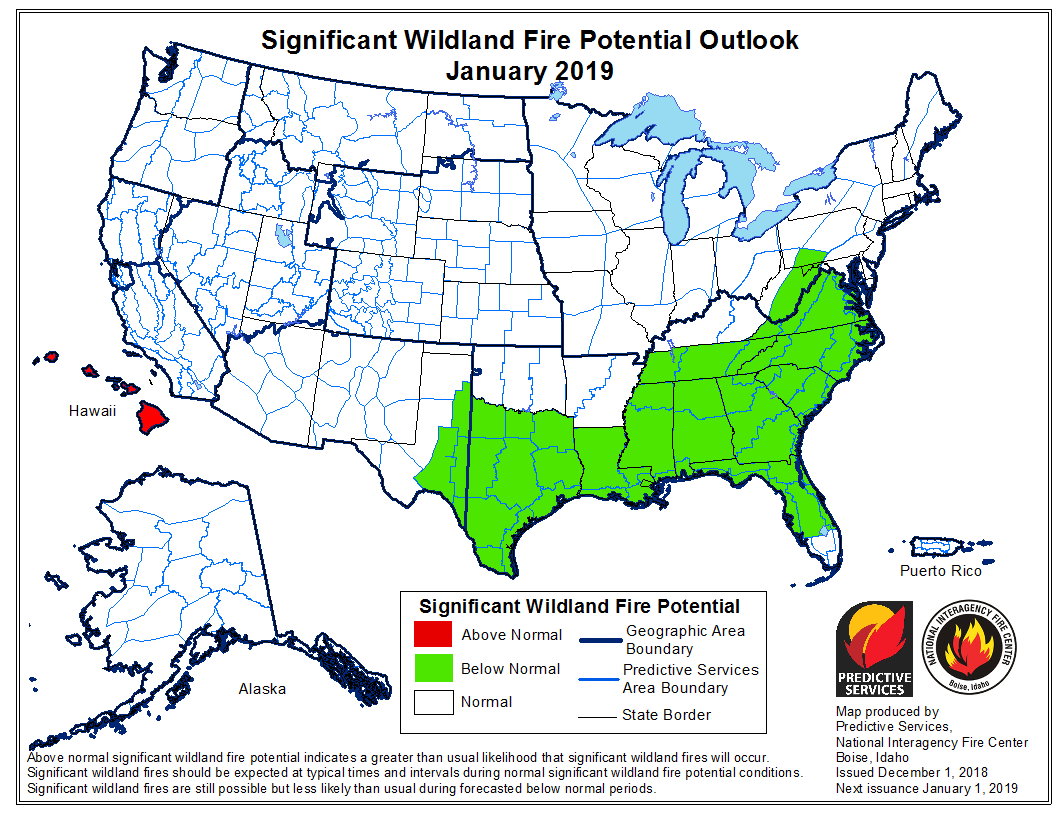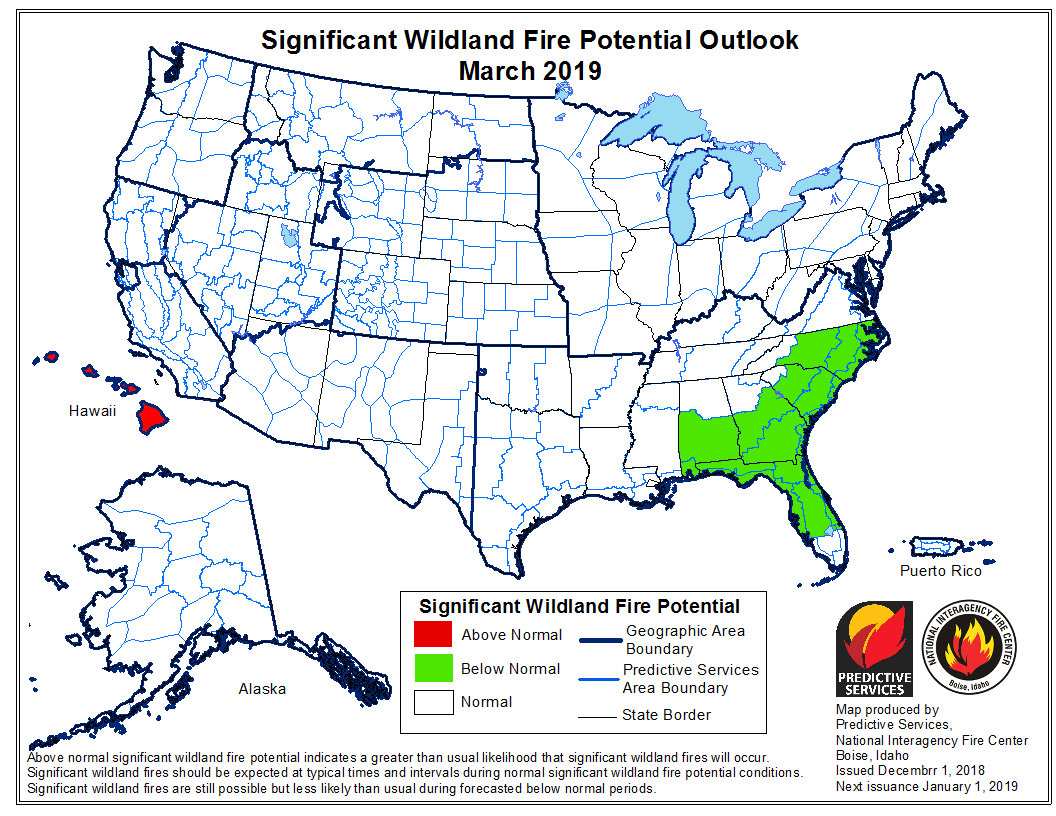On December 1 the Predictive Services section at the National Interagency Fire Center issued their Wildland Fire Potential Outlook for December through March. The data represents the cumulative forecasts of the ten Geographic Area Predictive Services Units and the National Predictive Services Unit.
If their analysis is correct, the only area with above normal wildfire activity during the period will be Hawaii. Southern California has dropped out of the very active prediction category.
Below:
- An excerpt from the NIFC narrative report for the next several months;
- More of NIFC’s monthly graphical outlooks;
- NOAA’s three-month temperature and precipitation forecasts; and,
- Drought Monitor.
“Much Climatologically speaking, fire activity during the winter months, December through February, is at a minimum. Areas most susceptible to activity are generally restricted to the southeastern states where periodic increases in fire activity are possible during dry periods until spring greenup begins. However, current data and expected trends in precipitation suggest that large fire potential will be Below Normal in this region. The abundance of moisture should keep fuels in most areas from becoming critically dry. Drought forecasts project that the region should remain mostly free of drought. In March, short duration wind events can trigger grassfire activity across the southern Great Plains while the fuels are receptive prior to greenup. This is considered normal and some activity is expected entering spring.
“The ongoing weak El Niño event will lead to an overall below average snowpack west of the Continental Divide this winter except possibly across the southern Rockies where above average precipitation is expected. Snowpack deficits along the Divide will likely be buffered by northeasterly flow events as fronts drop south into the country from central and northern Canada.
“Sea surface temperatures (SSTs) surrounding the Hawaiian Islands range from half a degree to 2 degrees Celsius above average. Average temperatures throughout the region are expected to continue to be slightly above average through March. Rainfall was above normal in October but dropped off sharply in November. The official outlook for Hawai’i follows historic correlations, calling for below average rainfall from December through the spring months. Fuel loading has been above average since last spring, and fire activity was above average during the drier portions of the summer. Therefore, as dry weather continues Significant Fire Potential will increase to Above Normal in December and remain there through March and likely beyond.”







Thank you for this forecast! It is difficult nowadays for retirees to figure out where to go to have a relative unproblematic last few years! Having lived and worked for many years in NYC we wanted to get out to a warmer climate! Well we realized Florida is out clearly, the Carolinas no after all the hurricane damage, California fires, the Caribbean not a good idea , so we thought Maui but now this doesn’t look good either! We might have to just stay put! Any other ideas?
Wildfire potential is relative. Higher than normal fire potential in Hawaii will not result in 10,000 homes burning in a 12-hour period. The state has fires but they are controlled much more quickly and at a much smaller size than fires in California or Nevada. It’s generally not an issue for the residents, like those who live in Northern California, Washington, or Oregon who occasionally have smoke-laden air that is dangerous to breathe. However, hurricanes pass through Hawaii now and then. Most parts of the U.S. have weather related inconveniences, like ice storms, high humidity, extreme heat, tornadoes, hurricanes, extreme cold, heavy snow, or strong winds.
Thank you for your uplifting response about us wanting to settle on Maui and the possibility of having to deal with wild fires there! We had spent the month of last August there and had to evacuate. Having the hurricane and the resulting fire was worrisome to say the least! We were ok but it was a lot of cleanup from smoke and soot! When we got home to NYC there was another hurricane on Maui! So we are rethinking things! You telling us the above is helpful though and we will be there in Jan through Feb.
and reassess!